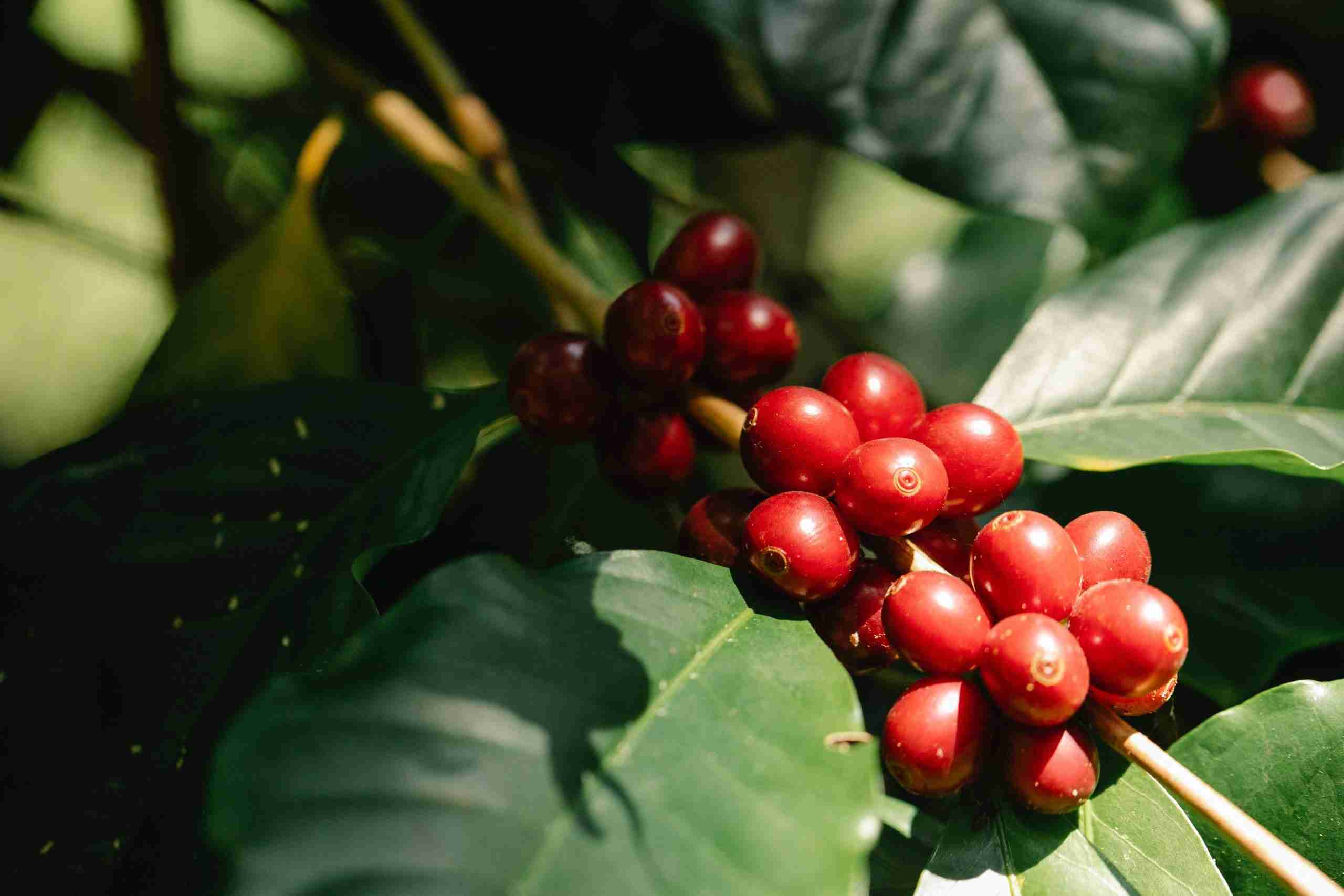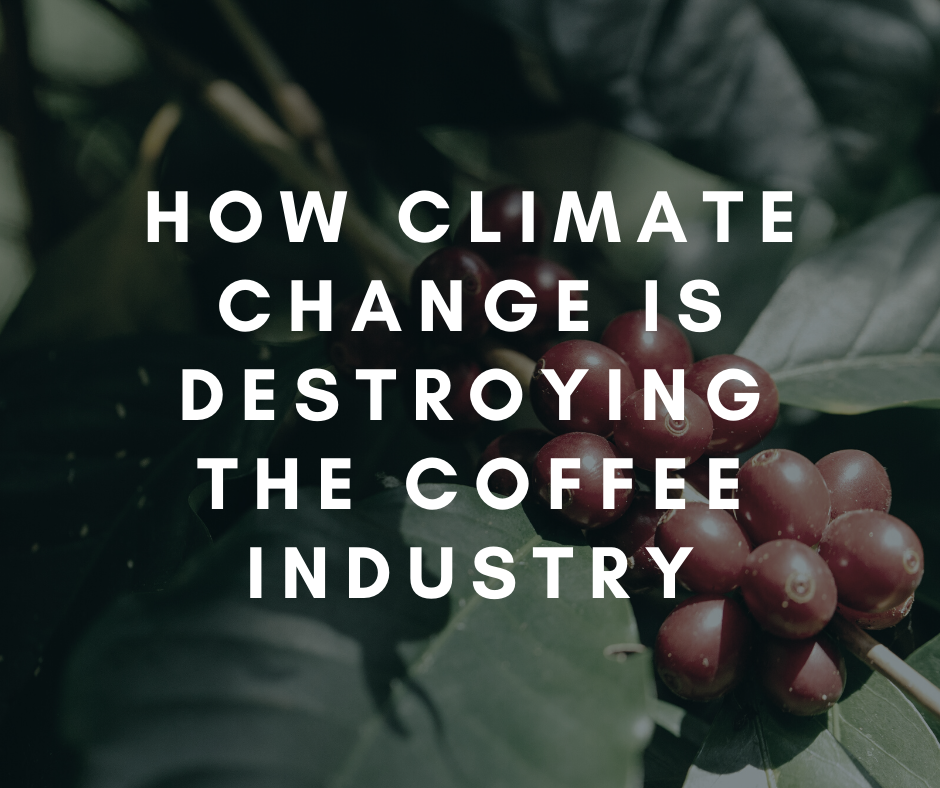
Your daily cup of joe may be in danger, and you may not even realize it.
Millions of people throughout the world currently take the coffee they drink for granted. We may not be able to take advantage of this forever.
The coffee industry is built off the backs of small farmers that may be in danger due to change environmental factors affecting their production, introducing problems, and dimming the future of the coffee industry.
Rising temperatures, droughts, and temperature swings have made good coffee incredibly difficult to grow efficiently and have pushed costs higher for farmers and consumers. As time goes on climate change will increasingly impact farmers affecting the quality and price of coffee around the world.
Currently, farmers in Latin America are the main cultivators of coffee exported around the world. There are over 14 million people in Latin America today working in the coffee industry. However, small farms are being hurt by climate change causing decreasing return on investment. Many of these farmers are abandoning coffee to grow other crops.
How Coffee Production Changed Over Time
Coffee plants require very specific growing conditions to properly grow tasty coffee beans. Climate change has had a clear impact on coffee growers and has been shrinking the growing regions and has made it much harder to grow coffee.
Global temperatures continue to rise between 1.5 Celcius to 4.5 Celcius per year in the hottest months. This results in droughts and then periods of extreme rain. This makes farming coffee much harder, especially for smaller farms that cannot afford to maintain their farms with these extreme fluctuations.
These small farms also will lose arable land every year. The rising temperatures will reduce the area suitable for growing coffee by up to 50% by 2050.
Temperature and rainfall conditions are some of the most important factors for good coffee crop yields. Arabica coffee plants are extremely sensitive to increasing temperatures, especially during their blossoming and fructification stages.

For arabica plants, temperatures as high as 30 degrees Celcius can cause permanent damage to the plant, reducing growth, resulting in yellowing, loss of leaves, and reduced crop.
Robusta beans, on the other hand, can better deal with higher temperatures, but suffer from lower temperatures.
The increasing mean and maximum temperatures and fluctuating distribution of rainfall will affect coffee production more and more as time goes on. In addition, there are more frequent weather events in tropical regions that can wipe out the coffee industry in the near to long term.
Climate Change impacts on the Coffee Industry
These changes are already affecting the coffee industry and in a few years, the coffee industry may no longer look the same as it is today. Many small scale farmers have already lost or are at risk of losing their farms due to low yield and low income.

This will affect all parts of the supply chain, eventually affecting the consumers. There will be less high quality or gourmet coffee available for sale, and the stuff available for sale may be lower quality. It will also have upward pressure on coffee prices throughout the world. Do you hate paying $5 for a latte at a coffee shop, because it may be a whole lot more in a few years.
There are going to be many losers due to these changes, and it will directly impact you. There will be thousands of farmers whose livelihoods and income rely on the climate.
Climate change impacts on arabica coffee beans
Proper temperature and rainfall conditions are essential for high quality and high yield coffee beans. Because Arabica coffee is native to tropical highlands where there are historically low fluctuations in temperature and rainfall, the crop phenology does not account for climate changes.
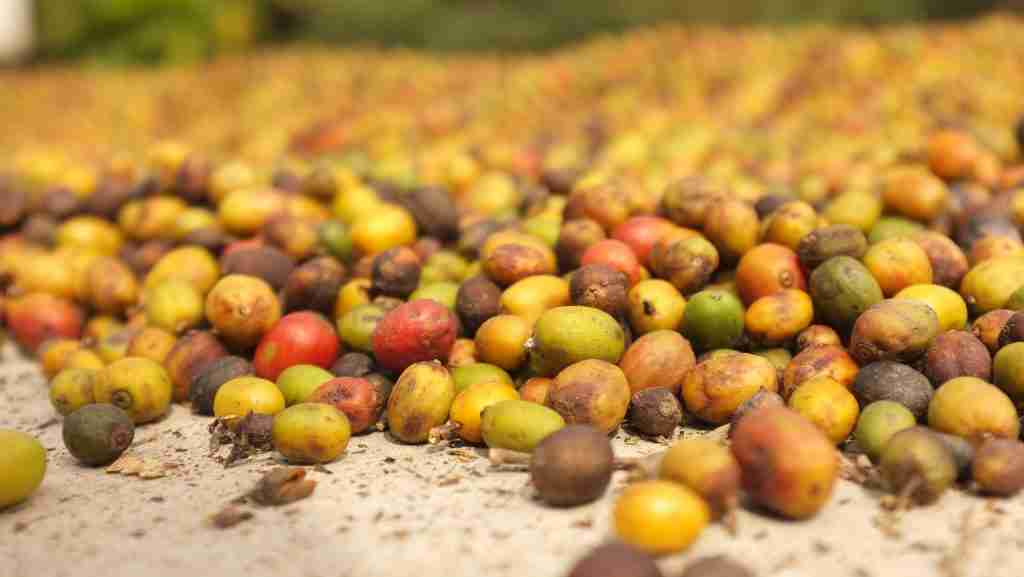
Higher air temperatures during blossoming, which happen during droughts or dry seasons, can cause coffee flowers to be aborted and result in a lower yield. Lack of water while growing also has many other detrimental effects on the arabica coffee plant.
As a result, while the coffee plants can resist drought, the coffee fruit quality severely decreases. Due to climate change, dry seasons will become even drier and precipitation will be more sporadic. Arabica coffee will suffer and the ideal growing locations will steadily decrease year after year.
Do not be surprised if arabica coffee beans continue to grow in price as climate change continues.
Climate change impacts on robusta coffee beans
Robusta coffee unlike arabica coffee is native to lowland forests in the Congo River basin. They are still affected by climate change but in a different way. Because they are grown in a dense equatorial rainforest they need abundant rainfall and require cooler temperatures.
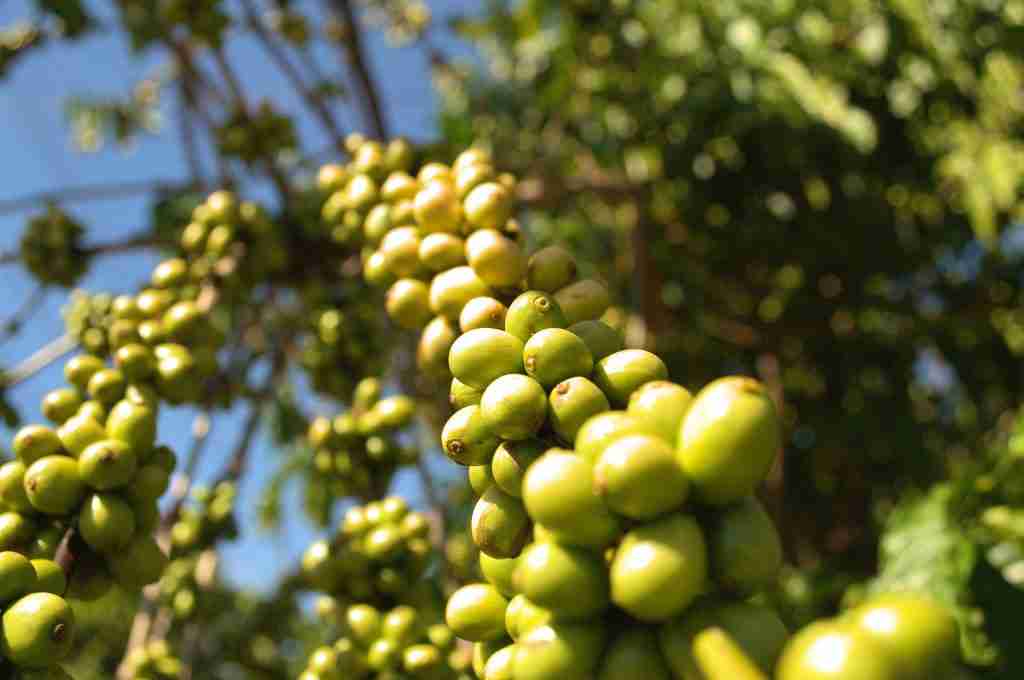
High temperatures and dry air can harm the plants and decrease yield and quality. Because it is native to a rainforest these coffee plants are very susceptible to the cold. Temperatures below 5 degrees Celcius will kill a robusta coffee plant.
Climate change also results in colder winters because it is disrupting and distorting weather systems.
Problems With Coffee Production
Each growing zone will be impacted differently due to the changes in temperatures and weather events. Over the next forty years, there will be a net loss in the total area suitable for coffee production. Here is what is happening in every growing region, and then I will go into strategies that farmers can use to try to mitigate the effects of climate change.
Climate change problems in Guatemala and how it is impacting coffee
In Guatemala, there is a predicted decrease in rainfall in the critical growing period for coffee beans. In July, August, and September rain has been steadily decreasing.
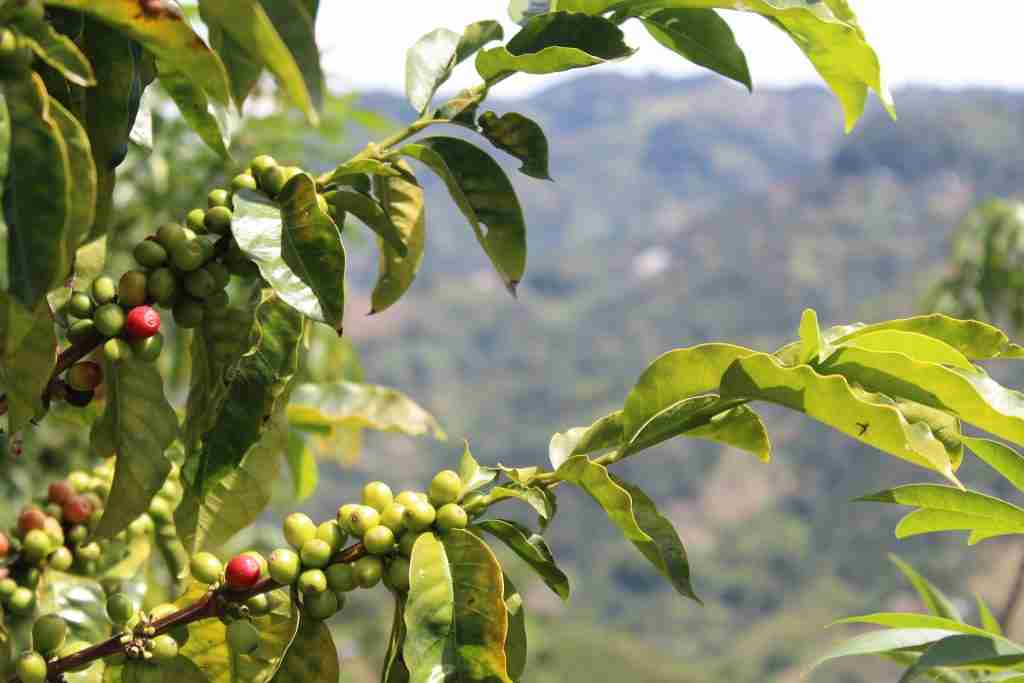
This is paired with higher amounts of hurricanes and other weather events that cause devastating losses in coffee crops.
El Nino conditions also leave to droughts in the eastern region of Guatemala where many coffee growers reside. As stated above the quality of arabica coffee beans will be affected negatively by lack of rainfall and drought.
Climate change problems in Brazil and how it is impacting coffee
Brazil is one of the largest exports of coffee and they have been seeing climate changes due to global warming. By 2050 Brazil’s mean annual temperatures are expected to increase by 4 degrees Celcius in the summers and by 2 – 5 degrees Celcius in the winters.
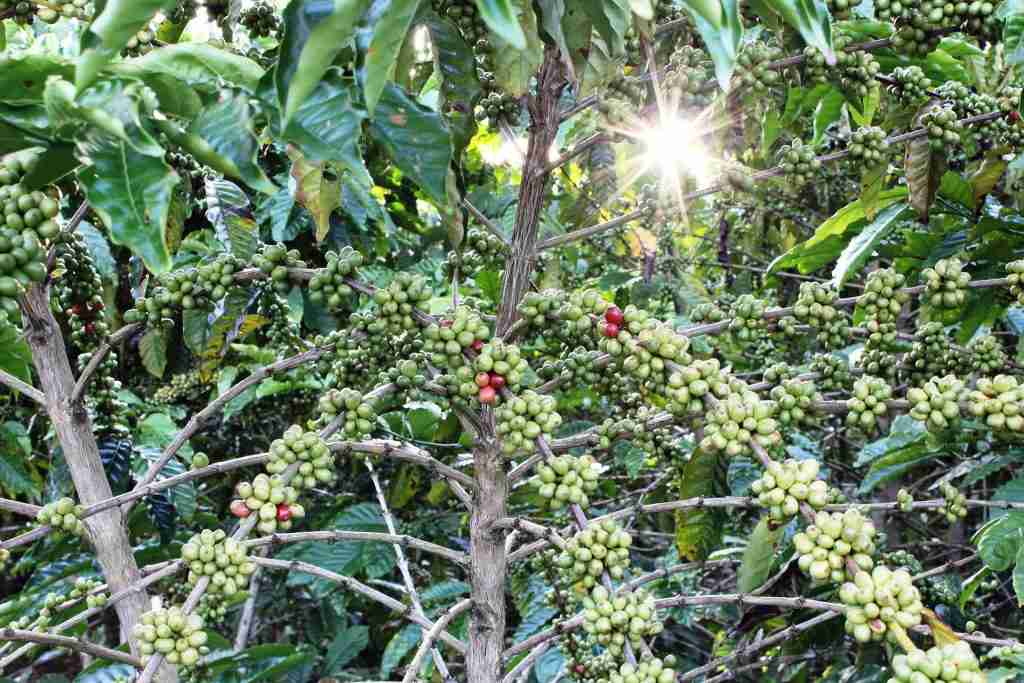
This is coupled with increased rainfall of around 20% due to extreme weather events such as hurricanes.
It is predicted that Brazil will lose around 33% of the arable growing land in Sao Paulo and Minas Gerais, two large coffee growing states in Brazil. They have been researching to find any way to prevent this from happening but there has been no practical implementations of coffee adaptation or coffee mitigation strategies.
Climate change problems in Vietnam and how it is impacting coffee
Vietnam is expected to increase by 1.4 – 4.2 degrees Celcius by 2090 and the amount of hot days is expected to increase by 23% to 55%. So most of the days in Vietnam will be above 25 degrees Celcius.
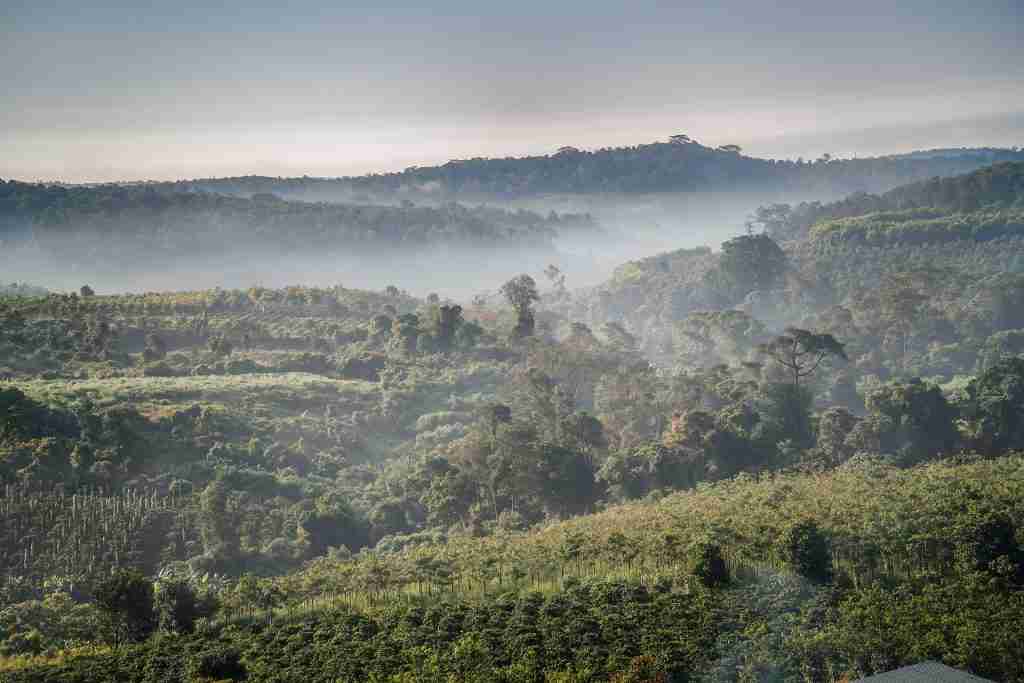
In the highlands where the coffee is usually grown this may impact the robusta coffee that is usually grown there. However, robusta coffee is more resistant to hot temperatures.
They also predict more rainfall during the wet seasons and a decrease in rainfall during the dry season. This is also due to the extreme weather events from Juno to October. They predict serious impacts on water resources such as rivers and ground water. The expected increase and demand for irrigation will cause these resources to dry up and cause a strain on farmers and the environment.
The Future of Coffee Industry
There have been many strategies put in place to help farmers adapt to the changing climate. Two of the main mitigation strategies are reducing the contribution of coffee production to greenhouse gas emissions, and sequestration of carbon in shade trees or forest areas of coffee farms.
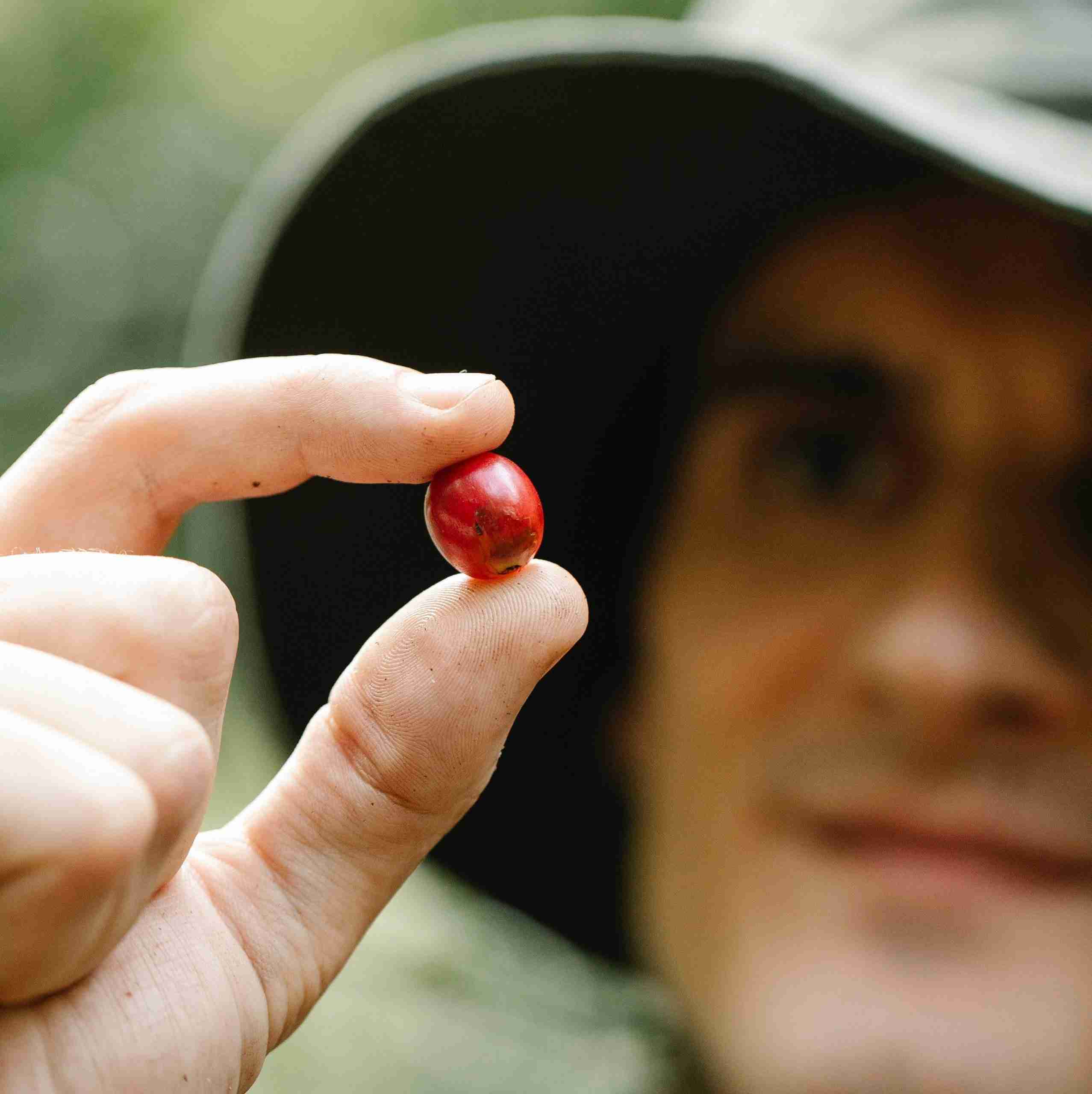
However, coffee farmers can only do so much. Everyone has to do their part to stop climate change. If you want the coffee industry to survive and to continue thriving you should do your part. And it’s not just the coffee industry, many other industries around the world are being affected by climate change.
Ask yourself, what are you doing to help prevent this?

